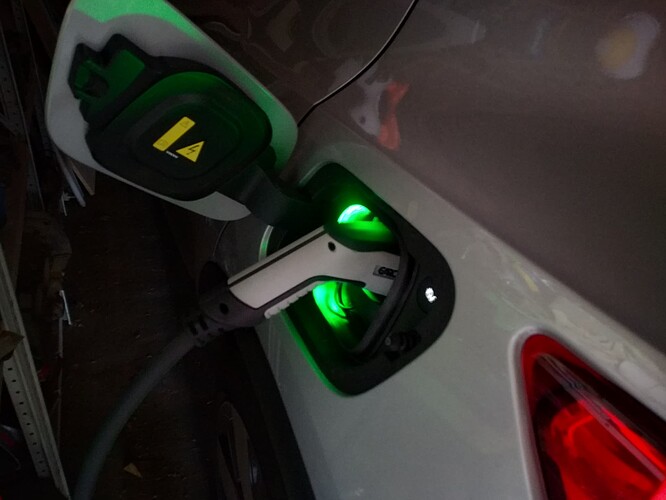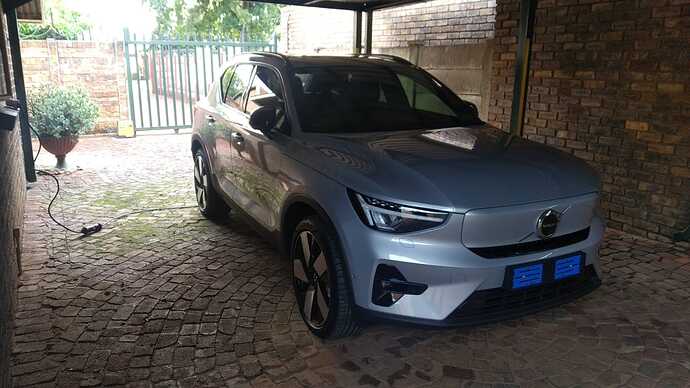That is a PV efficiency, not low voltage DC to AC.
That is my ‘measured’ (using logged inverter data) average efficiency for battery power output to inverter AC output.
Are you sure the inverter doesn’t show you a split of where its AC power came from? Otherwise it completely negates the need for high voltage batteries, because I thought that was due to efficiency gains.
For the Sonsokkies, the PV is boosted directly to the HV bus from where the AC is made. Same topology used by Goodwe and the new Multi-RS.
It therefore has efficiency (PV to AC) that is on par with most PV-inverters. I expect it’s battery charging to be less efficient though, because that will pass through two conversion stages.
Nope only energy source is battery at that point. But this is an advantage of high frequency inverters - they have very good conversion efficiency.
I agree, but surely the Sunsynk taking 1kW (at night) out of the battery doesn’t translate to >0.95kW on the AC side (which is what we are discussing)? I always assumed that losses taking power from the battery to AC is ~10% for all 48V systems since it needs to be boosted to what, 350V, which you don’t get for free (I consider >95% efficiency as partically free)?
I know their MPPT efficiencies are higher going straight to AC as it comes in at a high voltage. But if what you are saying is true, why would anyway want to pay extra for high voltage batteries (for example 450V, not 48V)?
*Edit, I guess the benefit of high voltage batteries will still be that they are charged more efficiently by high voltage PV arrays.
High voltage systems are best for high power applications. It is already hard to route/distribute/switch 200A at 48V. But almost trivial to do 25A @ 400V. But you do also get efficiency advantages (usually 98%+).
As to efficiency, I think you are stuck in the LF mindset. There 90% efficiency is a stretch goal, but for modern HF converters, 97%+ is commonplace.
The HF stages are both around 93% to 95% efficient. So your round trip efficiency (PV to battery and back to AC) becomes 0.95^3 at best, or 85%. From battery straight to AC, or from PV to AC, would both be around 93% to 95% efficient.
I believe they are even more efficient than 95%. Also, if you start with an 800V battery (ie you can curve the full peak to peak AC waveform out without swapping polarity) it makes for less components too, which theoretically makes it less expensive.
Thanks for the insight!
Thanks! I guess I just assumed that going from battery to AC would be equally efficient between a good LF design and a good HF design, should the voltages be the same.
Wandering way off topic, but I have always wondered how we ended up with 48V systems. Everything (except battery balancers) would end up way more efficient and cheaper if built for 400V.
We started with 12v so I guess some improvement.
On another note… Tesla moving to 48V and ditching 12V for all systems. The cost reductions and efficiency improvements going to be big for them AND the industry/competition.
48VDC is also a lot safer for the DIY dudes than 400VDC would be.
Go tell my battery about safer at 48 Volts, peaking at ~10 000 Amps for a short circuit ![]()
WeldingGroetnis
I’ve wondered too. Well, back in the day for us, it was 36V. Some of it makes some sense. We got to 36V because that meant you could use existing 32V lighting, so that became the voltage used by the military (back in the day), which in turn meant it was the voltage used by rural farmers. So for a while, 36V was the de-facto standard used in rural Namibia, and probably a lot of rural South Africa too. Which is still a multiple of 12V.
Why was the lighting 32V? Well, because that’s what the first “lighting plants” used, because they had 16 x 2V lead acid glass batteries (this is back in the 50s), and there is some hint that the lamps may have been used to light trains also.
So why 48V? Well, it is a good compromise between high enough for efficiency, low enough to be safe. And it is a multiple of 12V as well. And higher than 36V.
Why 12V? Because that is what cars used. And why 12V for cars? Because it is 2 times 6V, which is what the first cars used. And that is likely in turn because lead acid technology had 2V cells, and when cars moved to electrical lighting, that is pretty much the lowest amount that would work in any shape or form.
So the whole thing is a bit like that story about why the railway lines are spaced the way they are. Because the tools came from the Brits, the Brits built them on existing roads which was that wide because that’s how wide a Roman chariot was, which in turn was that wide because that’s how wide two horses was. So if you are wondering why the rocket boosters on your multi-million Mars mission is that wide (because they had to be transported by rail), it is likely because the entire thing is measured in multiples of horse-arses.
![]()
True dat. We occupy Mars based on horse arse!
PerdeGroetnis
The next time someone asks: What was first? The chicken or egg? I am going to say: Horse-arse!
When all is said and done, you can calculate the economics of an electric car backwards, forwards and inside out, and it never really makes sense.
But as the Cadbury ad says ‘just one bite and all resistance crumbles’…
(with my new DIYish battery, now powered by solar for up to 75km per day…)
![]()
Tell us more and pics please!
Well, the battery build is here:
The ‘rather stupid impulse buy’ I refer to is a Volvo XC40 P8. It makes absolutely no economic sense, but it is a wonderful car to drive. And 5 years of completely hassle free driving is a definite plus.
(Charging from a wall plug before I installed the wallbox charger.)
Between the new battery and usual available storage on my old battery, I now have about 15kWh that I can charge the car daily for ‘free’ (* see above calculations).
The only real plus is that 80%+ of my driving is emissions free (I still need to use some Eskom after longer weekend drives (often 200km+ per day).
We all wish we had a car like that. But not everyone has the $$$ to do the impulse buy. ![]()
My impulse buying is more in the line of a new cellphone or extra PV panels ![]()

